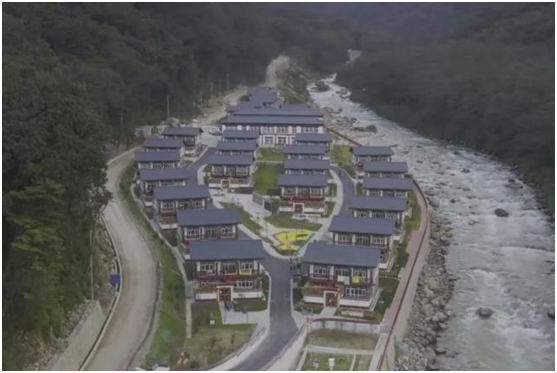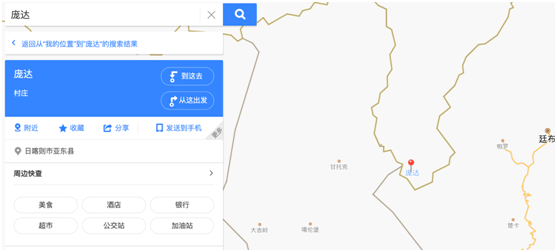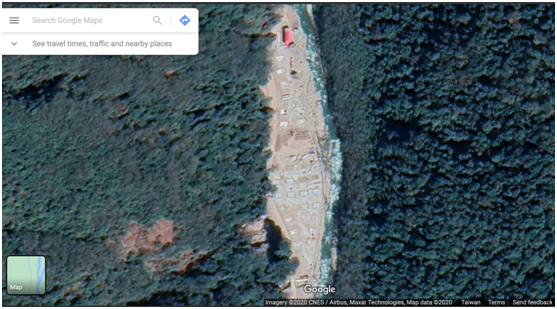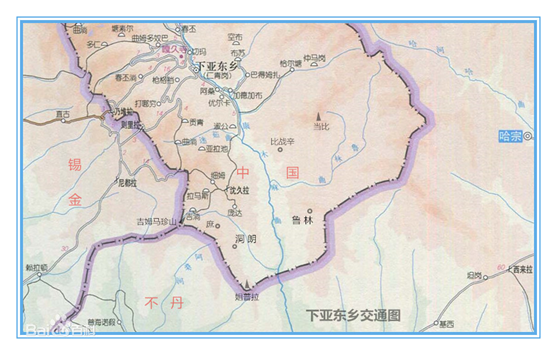The Indian media hyped that "China village was built in Bhutan". Expert: It is purely untrue and artificially created "China is not controversial".

Recently, the news that Yadong County, Shigatse City, Tibet has built the "Donglang No.1 Village" has aroused the hype of the Indian media. This small village named Pangda Village was described by the Indian media as "built two kilometers in Bhutan". On the 22nd, the Global Times reporter checked the satellite map and found that there is no doubt that Pangda Village is in China, about 22 kilometers away from Yadong County. Experts in Sino-Indian relations and frontier fields all said that the Indian media reports were untrue.
According to public information, in September 2020, Yadong County finally identified 27 households and 124 farmers and herdsmen, and voluntarily moved from Shangdui Village (4,630 meters above sea level) in Duna Township, Yadong County to Pangda Village.

Yadong County is located in the southwestern border of the motherland, at the southern foot of the middle Himalayan Mountains, adjacent to Bhutan in the east and south, and adjacent to Sikkim in India in the west. In 2017, the "Donglang confrontation" that once strained Sino-Indian relations took place in the border area of Yadong County. According to public reports, Pangda Village is 35 kilometers away from the county seat, while online map ranging shows that the straight-line distance between the two places is about 22 kilometers.


Photo: Baidu map clearly shows that Pangda Village is located in China.

Photo: Pangda Village shown by Google Satellite Map
However, the report of India’s New Delhi TV Station and The Times of India said that "Pangda Village is located within 2 kilometers of Bhutan". However, Namgyal, Bhutan’s ambassador to India, once said that "there are no China villages in Bhutan".
"Pangda Village must be in China." Zhang Yongpan, deputy director of the Xizang Office of the Frontier Institute of China Academy of Social Sciences, told the Global Times reporter on the 22nd that, geographically speaking, Pangda Village is located on the west bank of Yadong River (Kangbumaqu), and both sides of this river, south to the watershed of Donglang Ridge, are undoubtedly China territory. The map quoted by Indian media is wrong.
Published in 2004 by the Treaty and Law Department of the Ministry of Foreign Affairs of China, The Collection of Treaties on Border Affairs in People’s Republic of China (PRC)-No Volume in China points out that the border between China and Africa has never been formally demarcated by treaties or agreements, but there is a traditional customary line between the two countries, and the border areas are basically stable. The reporter saw from the online map that the straight-line distance between Pangda Village and Jiepu Pass at the southernmost tip of Yadong County is still 6.6 kilometers.
In August 2017, the Ministry of Foreign Affairs of China issued the document "The fact that Indian border guards crossed the border into Indian territory in Sikkim section of the Sino-Indian border and China’s position", which clearly pointed out that Donglang area is China territory according to the Tibet-India Treaty of the Sino-British Conference in 1890. There is no doubt that Pangda Village is located in Donglang area in China, which is a fact that no external force can tamper with.


"In fact, the border between China and Africa was originally very controversial, but it was because of India’s open and secret obstruction that it was not formally delineated." Qian Feng, director of the research department of Tsinghua University’s National Institute of Strategic Studies, said in an interview with the Global Times on the 22nd that India regards Bhutan as its sphere of influence out of the mentality of "the overlord of South Asia", and India comes to interfere in the border negotiations between China and Africa at every critical moment. In Qian Feng’s view, the Indian media hyped this matter in order to create the illusion that "China is encroaching on Bhutan’s territory and bullying the small", so as to provoke China’s indifference. "However, from the official response of Bhutan, Bhutan has already seen through India’s true intention to sow discord, which also shows that Bhutan cherishes its friendly relations with China."
In the family photos of 27 households in Pangda Village that have been exposed by domestic media, the small villages near the mountains and rivers are paved with brand-new asphalt roads, and the small Tibetan buildings on the second floor of assembled steel structures are staggered, and the water circuit communication network is fully covered, with squares, village committees, clinics, police offices, kindergartens, supermarkets and plastic runways. The Global Times reporter arrived in Bhutan, which is only about 30 kilometers away from the area, in 2017. It can be clearly felt that it is very difficult to carry out infrastructure construction in this area due to the complex terrain. Zhang Yongpan told the Global Times that the completion of this small village shows that with the substantial improvement of China’s infrastructure construction capacity in recent years, technical capabilities can fully support the construction of border areas.
Zhang Yongpan also said that the rapid completion of this village has a lot to do with Xizang Autonomous Region’s well-off village construction plan in the border areas during the 13th Five-Year Plan period, which greatly improved the living standards of the border people. According to public information, in 2017, Xizang Autonomous Region issued the Plan for the Construction of Well-off Villages in the Border Areas of Xizang Autonomous Region (2017-2020), and decided to implement the construction of well-off villages in 628 first-and second-tier administrative villages in the whole region (including 427 first-tier villages, 201 second-tier villages and Chayu Farm), mainly focusing on "water, electricity, roads, education, science, culture and health"
Qian Feng said that some places on the border between China and China are sparsely populated, but many places have long-term living and grazing, and the production and living conditions are relatively difficult. Only when there are people in the border areas can China’s territorial sovereignty be truly safeguarded. "Now China has the ability to provide better infrastructure for local natural villages, attract more people to live and make ordinary people live in prosperity, which can avoid the sparsely populated situation in the border areas."
"Yadong is a very special place in Xizang, with a beautiful natural environment and a natural passage in history." Zhang Yongpan said that Yadong has been an important passage from Tibet, China to India and Bhutan for thousands of years, and it has a great reputation. In the Qing Dynasty, local people made a living by trading with India, Bhutan and Sikkim. The construction of new villages in Yadong County and the increase of local population will be beneficial to the interconnection between China and its surrounding areas, and objectively beneficial to the development of the whole region.
It is understood that the reason why the border issue between China and Africa has been delayed in recent years is mainly that India has obstructed it and coerced Bhutan to make excessive demands on China. The Indian media has been constantly creating so-called "disputes" on the border between China and Nepal and China, which is nothing more than an attempt to cover up India’s persistent trick of encroaching on the border issue. This kind of plot will not succeed. China has successfully demarcated its borders with all its land neighbors except India and Bhutan, while India has territorial sovereignty disputes with most neighboring countries. In recent years, it has expanded its territorial claims by amending the Constitution and unilaterally redrawing the map, and has been in constant conflict with small and medium-sized countries in South Asia. Hindu ultra-nationalism and regional hegemonism may become the biggest threat to peace and stability in South Asia.
Editor-in-Chief: Qin Hong
Author: Global Times Fan Lingzhi Bai Yiyi
Text Editor: Fang Ying
Source of the title map: upper view map compilation
Photo editor: Yong Kai